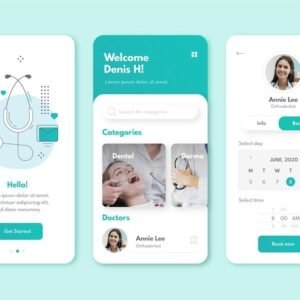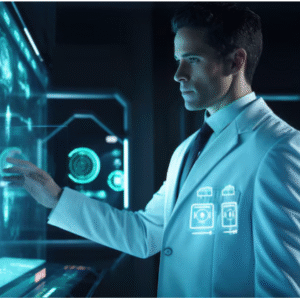Productivity tools have become essential for modern workplaces, especially with remote and hybrid models becoming the norm. What once started as simple time trackers have evolved into comprehensive platforms that analyze behavior, promote autonomy, and help teams focus on outcomes instead of just hours.
While Hubstaff remains a widely used platform in time tracking, many growing companies are beginning to feel its limitations.
It still delivers core features like time logs and activity levels but falls short of the broader demands of today’s dynamic teams, including privacy, actionable analytics, and built-in collaboration.
This blog explores the evolution of employee monitoring software and highlights where Hubstaff falls in the context of 2025.
1. From Time Logs to Real-Time Context
The first generation of productivity tools focused on hours worked. You could log time, track keystrokes, and view screenshots. Hubstaff still leans heavily on this model. But modern teams are now asking: What was achieved during those hours?
Instead of just capturing input, they measure output trends, focus on quality, and patterns in engagement.
2. Focus Metrics Over Mouse Movement
Hubstaff tracks mouse activity and keyboard strokes to calculate productivity. However, this metric is increasingly outdated, especially for knowledge-based roles. A software developer could spend 20 minutes thinking through architecture without touching the keyboard, which doesn’t make them unproductive.
Modern tools use focus time tracking, distraction monitoring, and deep work insights. By identifying when employees are engaged with their core tasks, managers gain a clearer picture of what drives productivity and how to remove blockers. That’s why wAnywhere is better than Hubstaff—it goes beyond basic tracking to deliver actionable insights that truly optimize performance.
3. Collaboration Tools That Go Beyond Time Tracking
Hubstaff includes basic project and task features, but it often requires integration with third-party tools like Asana or Slack to manage workflows.
In contrast, newer platforms offer built-in project collaboration. wAnywhere, for example, features unified dashboards, shared task boards, and time tracking tied directly to deliverables. It reduces tool fatigue, improves accountability, and streamlines communication.
Instead of juggling between five platforms, teams get everything in one place, leading to better coordination and less context switching.
4. Ethical Monitoring and Employee Trust.
Hubstaff’s reliance on screen captures and activity logs has drawn criticism for creating a sense of surveillance. This approach can lower morale and reduce trust.
Next-gen platforms take a privacy-first approach. Screen consent, optional stealth mode, and customizable monitoring settings create a culture of transparency. Employees feel safer, and HR teams are more confident about compliance.
5. Insight-Driven Analytics, Not Just Data Dumps
Hubstaff provides reports, but many are surface-level or require manual effort to interpret.
Modern productivity tools deliver visual dashboards, automatic trend detection, and alerts. wAnywhere’s analytics, for instance, show focus time trends, team engagement scores, and performance dips, all mapped against key goals.
It allows managers to identify bottlenecks early, coach team members more effectively, and report to leadership with confidence.
6. Scaling Teams Need More Flexibility
Hubstaff works well for small to mid-sized teams with uniform workflows.
Workforce analytics platforms, like wAnywhere, are built to scale. They support region-specific rules, department-based dashboards, and role-based access controls.
Whether you’re managing three teams or thirty, you can view performance data that fits your organization.
7. Integrations That Work Across Teams
Hubstaff has integrations, but their depth is often limited. Syncing tasks, pulling context from communication apps, or linking performance data across systems is not always seamless.
Modern solutions offer integrations with platforms like Zoom, Slack, Microsoft Teams, and Google Workspace. Instead of simply connecting, they aggregate context across platforms, so managers can see how meetings, chats, and document collaboration contribute to project outcomes.
8. Better Fit for Compliance-Sensitive Environments
Industries like healthcare, BFSI, and IT services must comply with strict data policies. Unfortunately, features like random screenshots and device-level tracking in Hubstaff can become compliance risks.
Tools designed for sensitive environments offer GDPR-ready features, user-controlled permissions, and built-in audit logs. They also allow different monitoring settings for different geographies or roles, helping your organization stay compliant while maintaining visibility.
9. Real-Time Coaching Over Annual Reviews
Traditional tools like Hubstaff offer retrospective data. You look back at what happened over a week or a month.
Modern tools offer real-time coaching insights. Managers can spot early signs of burnout, low engagement, or inconsistent focus and act proactively. It supports continuous feedback instead of reactive performance management.
It also helps employees take ownership of their productivity by giving them access to their work patterns and trends.
10. Migration Without the Headache
One common hesitation in switching tools is the fear of a difficult transition. Data loss, team resistance, and a long learning curve can make even the best tools hard to adopt.
Modern platforms offer guided migration tools, personalized onboarding sessions, and ongoing support. wAnywhere, for example, ensures that teams experience no downtime and that users understand the platform within minutes.
With prebuilt templates and industry-based configurations, the switch becomes smoother and faster.
Why Teams Are Making the Switch in 2025
The shift is happening for a reason. Businesses are no longer satisfied with tracking hours for the sake of their business. They want intelligence, context, privacy, and clarity, and they want it all in a system that supports both the employee and the employer.
If your current setup relies too heavily on time clocks and activity meters, you may be missing what truly drives team performance.
Final Thoughts
Hubstaff filled a critical gap during the early days of remote work. It offers businesses a way to ensure presence and track tasks from a distance. In 2025, teams now need systems that help them understand not just when people work but how well they work, what slows them down, and how to improve.
Productivity software has evolved beyond timesheets. It now includes focus tracking, privacy-first analytics, smart collaboration, and real-time performance coaching. Platforms like wAnywhere embody this evolution and offer a future-proof solution for growing remote-first and compliance-heavy teams.
If your organization is looking to make the most out of its distributed workforce, now might be the right time to look beyond Hubstaff.





